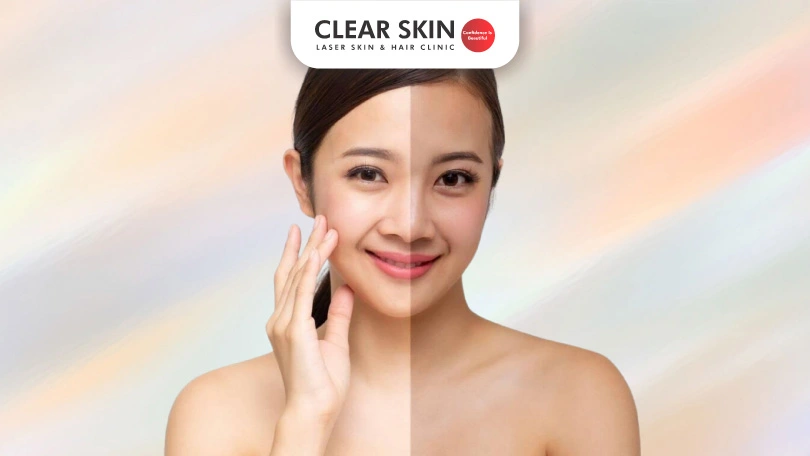Reviewed By:
Category: Skin Tan Removal
What comes first in your mind, during vacations or holiday time. Most of us imagine ourselves spending time on beaches, basking in the sun, mountaineering, enjoying our day. But somewhere we end our vacations with tanned skin that stays with us long after the vacation is over. Vacation is fun until we realize that the skin has turned two shades darker due to suntan!

Sun is the universal life-giving force. Life cannot survive in any form without sunlight and its energy. It is the primary nourishment for life itself. However, too much exposure to the sun’s rays harms. In this blog, I will try to help you with your queries relating to suntan, such as How to remove tan from face?
Table Of Content
- Layers of Skin
- What is Tanning?
- Why Do We Tan?
- How To Remove Tan From Face?
- Home Remedies For Tan
- Tan Removal Treatments
- How To Prevent Tanning Of Skin?
- When to Consult a Dermatologist?
- Conclusion
Layers of Skin
Before understanding the tanning process, let me brief you about skin anatomy. As we all know, the skin is the largest organ of the body. It regulates our body temperature and permits the sensation of touch, heat and cold.
Our skin has 3 layers: epidermis, dermis and hypodermis.
1) Epidermis:
It is the outermost layer of our skin. The prime function of the epidermis is to act as a physical and biological barrier to the external environment, protect from mechanical impacts and pressure, variations in temperature, micro-organisms, radiation, chemicals etc. It gives our skin its colour, for melanocytes that give melanin are present at the base layer of the epidermis.
2) Dermis:
The dermis is the layer of skin, which lies below the epidermis. It provides collagen and elasticity to the skin and hair follicles and sweat glands present in the dermis.
3) Hypodermis:
The hypodermis is also known as deeper subcutaneous tissue. Made up of fat and connective tissues.
What is Tanning?
Tanning is the process of skin pigment (melanin) in which it increases after exposure to the sun. This is the natural process of our body. When exposed to the sun, it helps you to protect from the sun like a shield. fter exposure to the ultraviolet (UV) radiation, your skin colour gets darker from UV radiation. In foreign countries, artificial sources are used more than themself such as tanning lamps or tanning beds which are found indoors.
When and How do we understand that we have tanned skin? When you see 2 shades of variation over the body in skin colour, it is Tanning. The Fitzpatrick scale is the scale which describes our skin type and is the said standard scale followed everywhere in the world. This scale is a way to estimate the response of different types of skin to ultraviolet (UV) light. As per Fitzpatrick skin types, Indians come under 4 or 5 types of skin. Fitzpatrick skin type 4- burns minimally and tan easily and 5th skin type rarely burns and tans easily.
Melanin cells in our body are of two types. They are Eumelanin and Pheomelanin cells. Eumelanin is a dark pigment that gives you black and brunette hair. Brown eumelanin and black eumelanin are two different types of eumelanin. Pheomelanin gives light pigment for example pheomelanin is found in the person who has red hair, and Pheomelanin concentrates over red areas of the skin such as the lips. In general, the more eumelanin in the skin, the darker skin will be.
Why Do We Tan?
How To Remove Tan From Face?
Skin Tanning & Tips for Tan Removal (स्किन के कालेपन को दूर करने के लिए टिप्स) | (In HINDI)
Home Remedies For Tan
Long-term sun exposure may lead to tanning. In this blog section, I will explain how to remove tan from face and get rid of tanning with the help of a few natural remedies.
Aloe vera gel:
Aloe Vera Gel has a cooling property and helps to lighten the tan on the skin. With long-term use, it helps decrease tanning. Aloe vera also helps moisturize the skin and prevent the peeling that sometimes happens with sunburns.
Sandalwood:
Sun-damaged skin gets relief after applying sandalwood powder The natural oils present in sandalwood help reduce suntan. It also helps soothe sunburn and with its cooling effect reduces the redness caused due to sunburn.
Gram flour:
An age-old beauty secret used by our grandmoms to get rid of the suntan is the use of gram flour. Very easily available and affordable, it is an excellent skin lightener.
Papaya:
The enzyme papain present in papaya has skin-lightening properties that help remove sun tan and also help reduce the visibility of scars and blemishes. Papaya is enriched with vital vitamins and nutrients that can restore the skin’s natural health and repair the damage caused by harsh UV rays of the sun. Hence, you may apply mashed papaya all over the face to reduce the tan.
You may try these various home remedies. In some cases, it might show a very effective result and in some, it may lighten the skin to a certain extent.
You may alternately visit your Dermatologist, who will help you to get rid of tanned skin with the medical line of treatment.
Tan Removal Treatments
1) Moisturizing
2) Electroporation
3) Chemical peel
4) Microdermabrasion (MDA)
5) Q switch Nd: Yag laser
6) Co2 laser
7) Face Pack
How To Prevent Tanning Of Skin?
When to Consult a Dermatologist?
Conclusion
Popular Q&As
Confused about whether diet causes acne? Get clear answers on food triggers, myths, and evidence-based guidance for better skin. Find the right medicine for acne vulgaris — from topical retinoids and benzoyl peroxide to oral antibiotics and hormonal options. Get ClearSkin’s dermatology-backed guide. Understand why dark circles appear and how to treat them permanently. Expert solutions, safe procedures, and skin care advice from dermatologists in Pune.
What is the link between Acne and Diet?
Best Medicine for Acne Vulgaris?
How to Remove Dark Circles Under your Eyes Permanently?
We Got Your Back! Ask Us Anything On Your Mind!
Reach out to us on
Didn’t Find What You Were Looking?
Please Contact Us.
We are committed not only to treating you, but also educating you.

